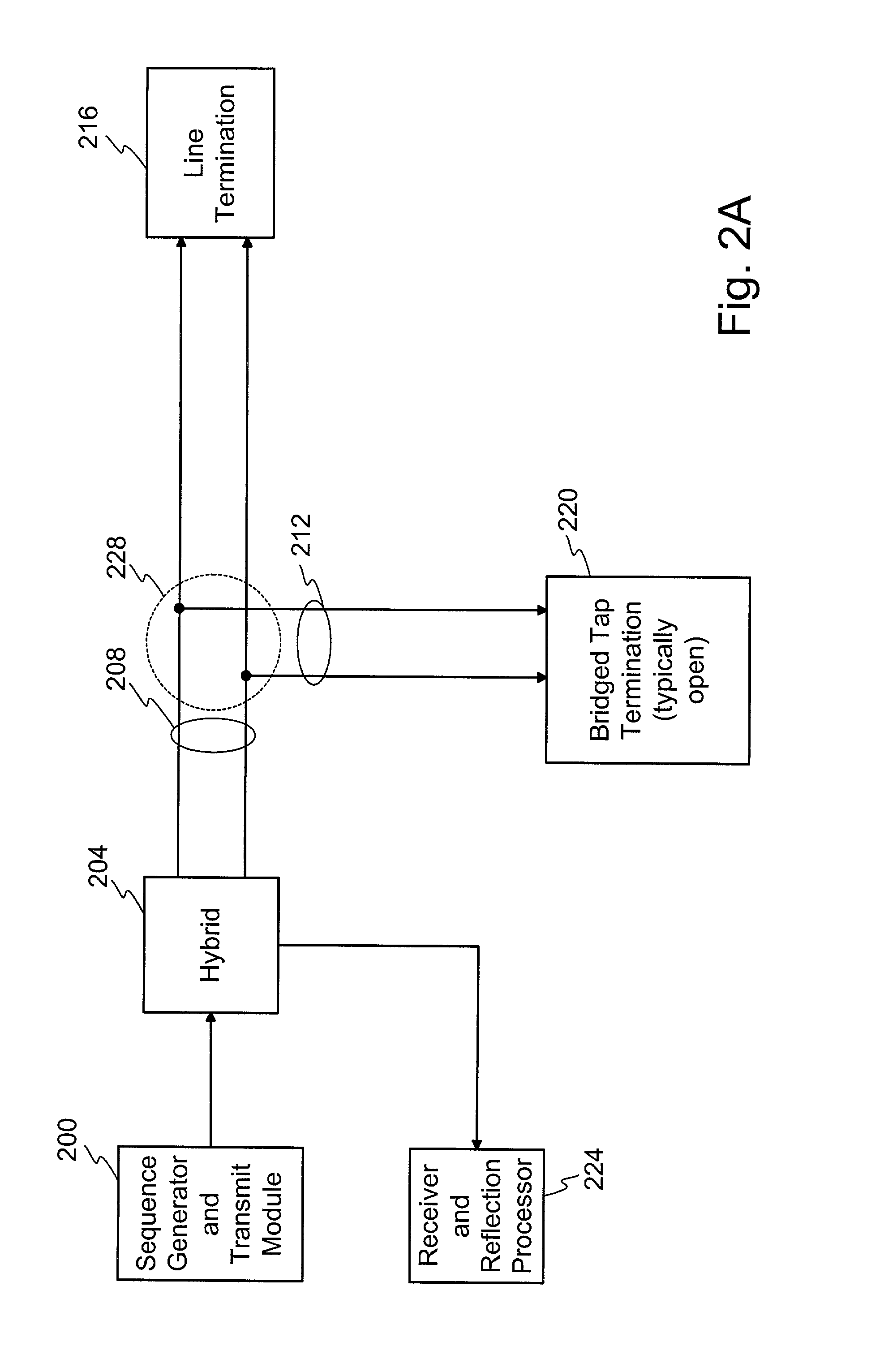Method and apparatus for transmission line analysis
a transmission line and analysis method technology, applied in the direction of data switching networks, distance measurement, instruments, etc., can solve the problems of lowering the cost of dispatching, reflection or echo, and high cost of dispatching service technicians
- Summary
- Abstract
- Description
- Claims
- Application Information
AI Technical Summary
Problems solved by technology
Method used
Image
Examples
example sequences
[0092] In one configuration, the sequence generator 420 or other device with similar capabilities generates a sequence defined by varying the polynomial of the sequence generator to provide different sequence signals. In another configuration, the polynomial is selected to maximize the period of the sequence, such as to create an M-sequence. As described above, the period of a length-maximized sequence is defined as 2.sup.m-1 where m is the number of stages of shift registers used to generate the sequence.
[0093] By varying the number of stages m, the period is controlled. Various advantages may be gained by varying the period of the sequence. For example, one advantage of increasing the period of the sequence when used according to the invention for sequence time domain reflectometry is in mitigating the effects of correlated additive noise such as crosstalk. In the correlator, the noise component is decorrelated which spreads the noise across all frequencies thus reducing the amoun...
PUM
 Login to View More
Login to View More Abstract
Description
Claims
Application Information
 Login to View More
Login to View More - R&D
- Intellectual Property
- Life Sciences
- Materials
- Tech Scout
- Unparalleled Data Quality
- Higher Quality Content
- 60% Fewer Hallucinations
Browse by: Latest US Patents, China's latest patents, Technical Efficacy Thesaurus, Application Domain, Technology Topic, Popular Technical Reports.
© 2025 PatSnap. All rights reserved.Legal|Privacy policy|Modern Slavery Act Transparency Statement|Sitemap|About US| Contact US: help@patsnap.com



